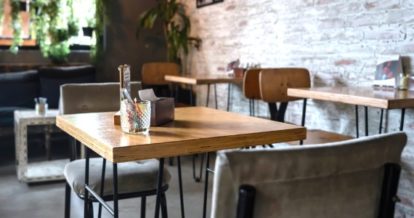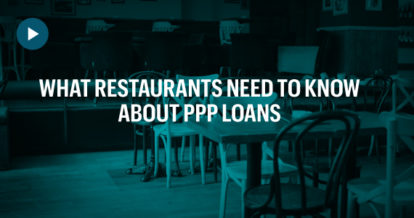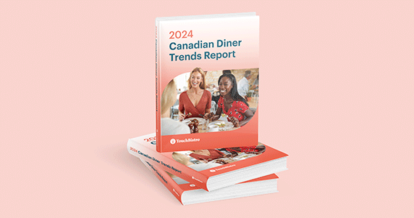Imagine having waited months to get a seat at the hottest new restaurant in town and finally the day has come. You roll up just in time and take a deep breath – your moment is here!
You open the door and… you’re seated in the back corner right by the doors to the kitchen. You spend the whole night being hit by doors and distracted by staff racing by.
Doesn’t sound like an ideal seat, does it?
Restaurant seating is literally what keeps guests to the table, so you want to make sure you’re getting the most from it.
Not sure how to? We’ll go over:
- What to consider when planning your seating plan
- Why strategic restaurant seating is important
- Top tips for getting the most out of your reservation seating
Pull up a seat and we’ll go over all of it.
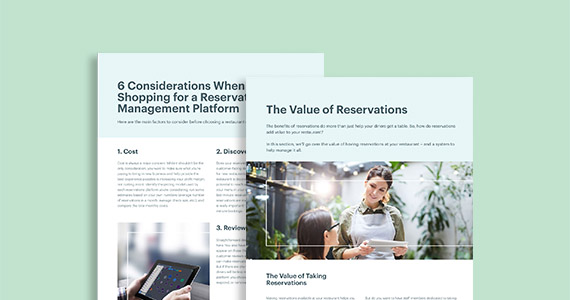
Learn how a restaurant reservations system can help your business thrive.
Top Questions to Ask Yourself While Planning Your Seating
If it were as easy as throwing as many chairs and tables in a room as possible, everybody would open a restaurant.
But there’s a lot to consider when planning your restaurant seating.
Your seating can play a huge part in your guest experience,
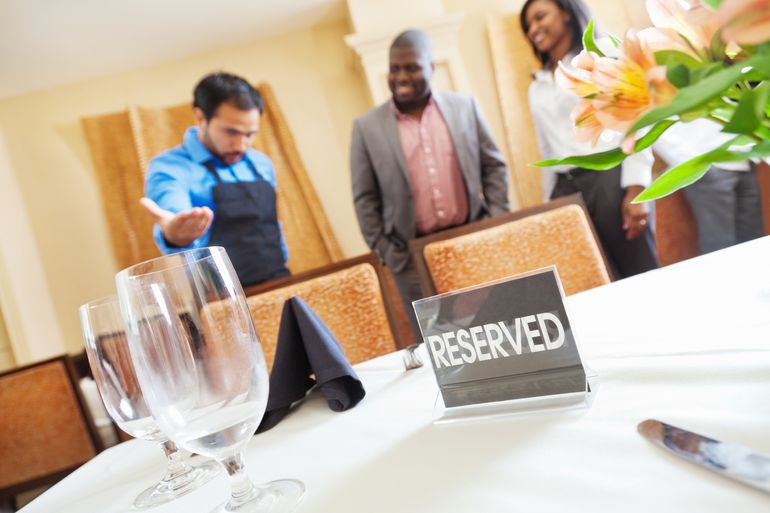
Here are some of the main things to consider as you build your floor plan:
- Is there room between tables for staff to travel back and forth? What about with trays of food or drinks?
- Is there room for guests to sit comfortably or are they sitting in the lap of somebody at the table next to them?
- Are your chairs comfortable? No matter how great they look, you’ll have a lot of empty seats if people don’t want to sit in them.
- Do you have seats set aside for guests making reservations? Are they all in the same area?
- Same questions for walk-in seating – where do you want walk-ins in relation to reserved seats?
- Do you have a way to track the status of each table? Knowing which tables just sat versus who is close to paying can help you make better seating choices.
Considering these questions as you figure out the floor plan will help you get the most out of each table and chair.
9 Top Tips to Maximize Your Seating
Now that you’ve considered the what and the why of restaurant seating, we’ll give you the how: how to make sure you’re getting the most from your seating choices. You know what to ask and why you’re doing it, so now it’s time to take action.
Here are the top tips for maximizing your restaurant seating.
1) Less Is Not More
But more isn’t the right choice, either!
Before you do anything, look at the size of your restaurant. How many tables can you realistically fit in here, while maintaining comfort? Sure, 100 folding chairs could fit in here, but do you want 100 folding chairs and people eating on their laps?
On the other hand, you don’t want things to look empty. If you don’t strategically plan your seating, even a smaller space can look sparse. You don’t want just one table in the middle of the restaurant. It may be uncomfortable for diners having all the focus on them or dining in isolation.
Unfortunately, there’s no formula that solves for the perfect amount of tables to have at your restaurant, but there are some recommendations you can consider:
- The most amount of space you want for one person is 18 square feet
- The least amount of space you want for one person 10 square feet
If the dining room at Joe’s Crab Shack is 2,200 square feet, he would want seating that accommodates:
- 122 people, at the most amount of space per guest (2,200/18)
- 220 people, at the least amount of space per guest (2,200/10)
Those numbers aren’t hard-and-fast rules, but they are a great place to start. Consider the vibe you’re going for, do some basic math, and see how many seats roughly you would want at your restaurant.
2) Track Your Table Status
As we mentioned earlier, tracking where your diners are within the course of their meal can help maximize what you’re getting out of your seating.
For example, if your POS shows you that section one has a majority of tables just starting their meal, and most tables in section three are wrapping up, you may want to seat the next wave of guests in section three. This helps you turn tables faster – if your staff aren’t overwhelmed with a whole wave of brand new tables, they can better care for the groups they have.
You don’t want complaints at the end of the night that your diners spent had to fight for their server’s attention. By tracking table status, you can best seat new diners – for the sake of them and your front-of-house staff.
3) Let Diners Choose
“Do you have a preference between a table or booth? Indoors or outdoors?”
There are a lot of variables with seating, and no two guests are the same. While one may be dying to get onto a patio, the next guest may be waiting to sit right next to the A/C. When your diners get to start with a choice on their seating, they start their experience on a good note.
But remember, offer these options when you can. If you know your patio is full with an hour wait, tell them just that.
4) “How Was It?”
You and your team set the tables and serve around them, but you’re not sitting at them for upwards of a few hours.
Is table ten too close to the one behind it? Are the spaces between tables too small that guests keep getting knocked by your staff running by? Or are some tables too close to the swinging doors of the kitchen?
These are all questions you might not have considered when setting your floor plan, but your guests will realize shortly into their meal. Give them a chance to offer feedback – from the food to the seating.
With the right reservations platform, reviews like this are easy. When guests dine with you through a reservation, your system can automatically email customers, asking them about their experience. Great reviews are always a big win, and constructive criticism gives you a chance to improve for next time!
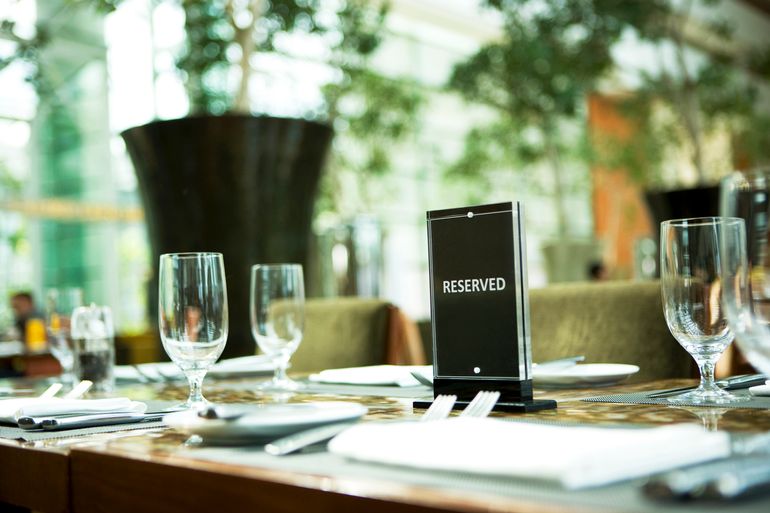
5) Optimize Your Reservations
What is your reservation system, if you have one? Pen-and-paper? One hostess on the phones taking reservations? A carrier pigeon flying to people with a note tied to his foot, announcing the table is ready?
When you optimize your reservations, you optimize your seating with it. Guests can book open tables at anytime through your website, a reservation app, or even Google reservations. You get notified in real time, allowing you to prepare staff for the upcoming shift accordingly.
6) …But Also Offer Walk-Ins
Chances are, the need for restaurants with walk-in seating will never go away. Sometimes, the best meals are from the restaurants you stumble across. If there were no restaurants offered walk-in seating, you wouldn’t get the chance to discover new gems. You’ll also have specials – like a buck-a-shuck deal for oysters or happy hour specials – that you would want people to walk in for.
You don’t want to completely give up foot traffic. Plus, having to turn away all guests who didn’t book ahead of time isn’t a good look – chances are, they won’t go home to book and try again.

Learn how a restaurant reservations system can help your business thrive.
7) Take Note
If guests are making a reservation, give them an option to add custom reservation notes. From allergies to celebrating a special occasion, allowing guests to raise a flag early on is a great way to give them the best experience before they even sit at the table.
By having special notes incorporated when guests make reservations, you’ve made it even easier to deliver a customized experience.
8) Don’t You Forget About Me (Your Reservation)
Have you ever spent 30 minutes holding a table for a reservation, only for them not to show?
The right reservation system can actually send automated reminders to guests who book reservations. Skip having somebody on your team spend hours making calls to booked guests to remind them and have your POS do the work. Some ways your system may remind guests about reservations include:
- Emails
- SMS messages
- Google calendar events
When you remind guests of their reservations, there’s less of a chance that they don’t show up – preventing you from having an empty table and money left on said table.
9) Embrace Change
Changing anything can seem daunting, but don’t shy away from making regular changes to your restaurant seating! Changing your seating can provide valuable business insights – like you have way fewer spilled drinks when there are fewer tables in the bar area.
But changes don’t mean completely scrapping anything that worked in the past! When your seating seems good for guests and staff alike, make sure to take note of what’s working before you make changes.
Your guests are spending the majority of their time with you sitting down, so restaurant seating isn’t something to take lightly. You’ll want to bring the same strategic and meticulous thinking you brought to restaurant interior design, menu, and staffing to your seating strategy. With the right technology and the time invested to plan, your seating can be another way you boost your guest experience and keep them coming back – and asking for their favorite seat, of course.

Learn how a restaurant reservations system can help your business thrive.
Download our free inventory template

